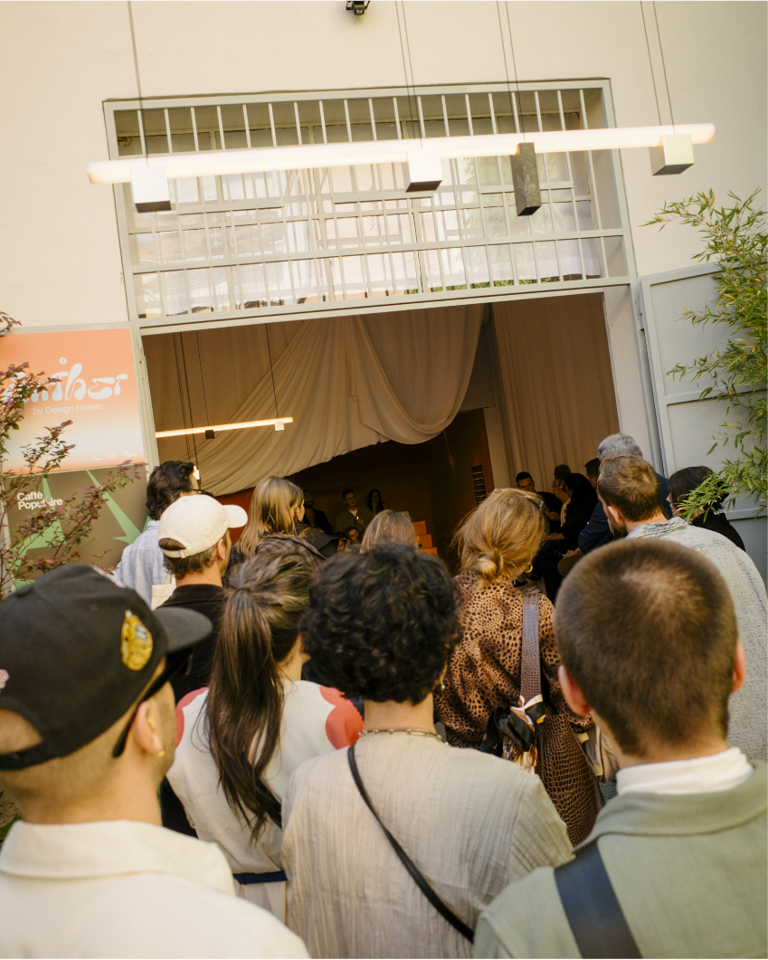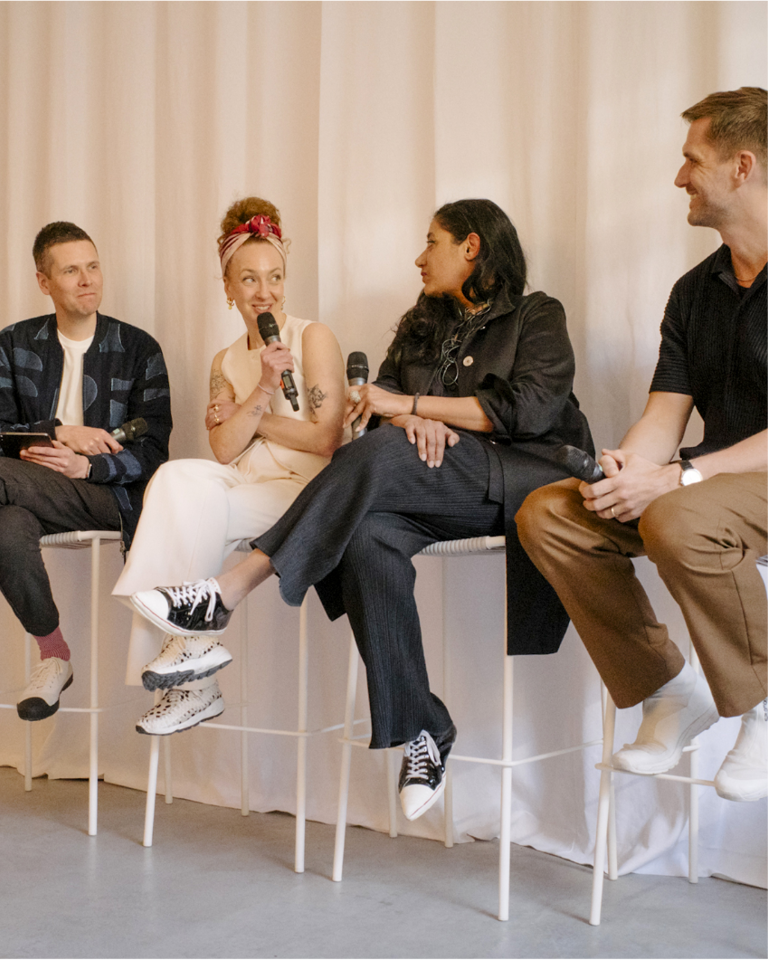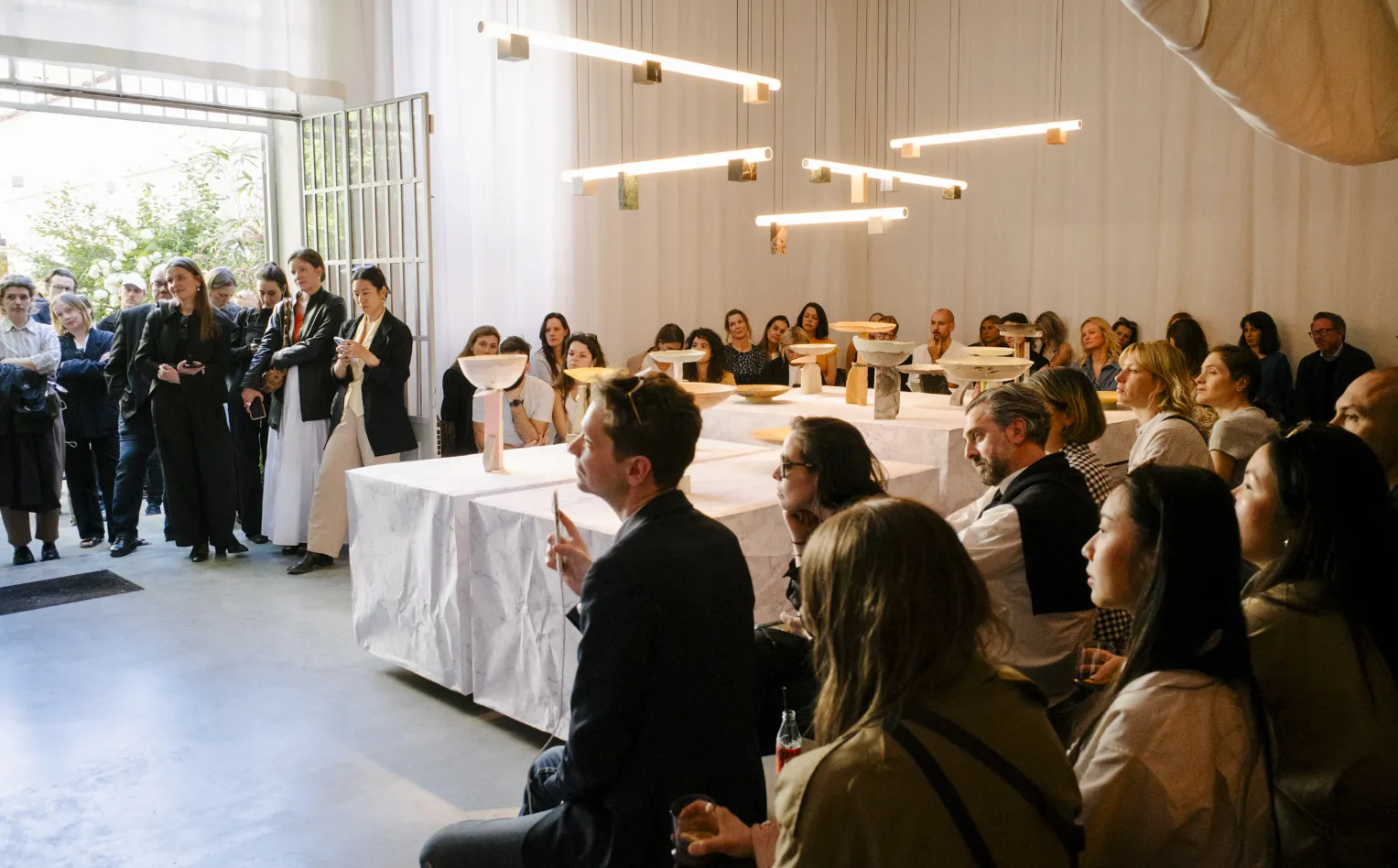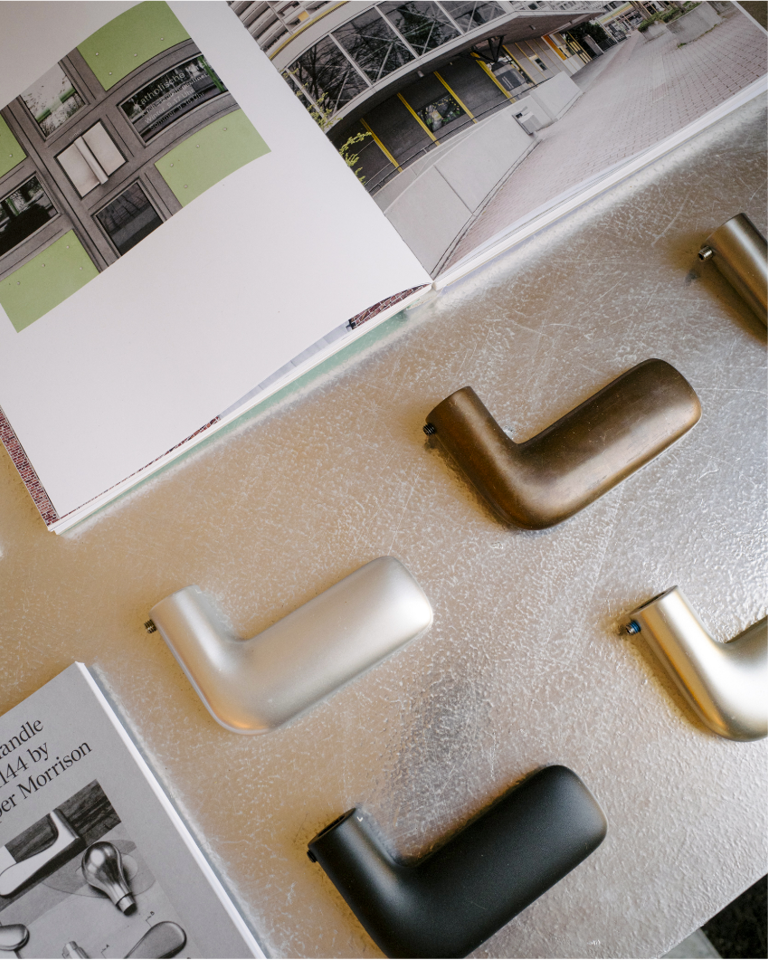Words Vidula KotianDate 25 April 2024
We heard from Max Fraser, editorial director of Dezeen, with speakers Robyn Landau, co-founder of Kinda Studios in London; Suchi Reddy, neuroaesthetics designer and founder of Reddymade Design, and Sigurd Larsen, a Berlin-based architect and designer on the impact and opportunity the emerging field of neuroaesthetics presents to the world of architecture and design.

At Caffè Populaire, conceived by DWA Design Studio and Lambert & Fils

Moderator Max Fraser with Robyn Landau, Suchi Reddy, and Sigurd Larsen
The discussion centered on the definition of neuroaesthetics, first defined in our Further Forecast 2024, and its real-world application as a powerful tool to activate and enhance our emotions—our most powerful physiological sensation that supports our decision making, well-being, and states of balance. For Reddy, “neuroaesthetics is a fundamental study of what it means to be human and to understand how we operate in our environment.”
Landau emphasized the central role of the body in our experiences. “When you think about it, your brain is actually trapped by the skull,” she noted. “It relies on sensory inputs from the body, so we can think of our body as our sensory interface with the world around us. These inputs, along with our perceptions based on past experiences, memories, cultural backgrounds, or biases, then affect our feelings, mood, and how we show up in the world.”
The panel shared the latest insights on neuroaesthetics and delved into its potential to revolutionize design, creating a future where designing for emotion as a function begins to steer creative briefs and leads to more impactful results.
Discussing the applications of neuroaesthetics in design, Larsen noted, “There are two kinds of people: those for whom the world must be structured like during the Renaissance and the Enlightenment, with defined rules. They believe in a color theory dictating that being in a green room reduces stress more than being in a red room. I encourage my students to delve deeper, to experiment with and challenge these concepts.”
In response to the question of how we can design spaces better, Reddy felt that designers and architects who intuitively use neuroaesthetics in their work should be involved early in the planning stages for big public commissions such as hospitals, schools, and public spaces to help make these environments inviting and comfortable.
Larsen expressed his hope that “more designers and architects develop a sensitivity to the impact of visual and haptic design rather than reducing it to 10 rules, as that simplifies the complexity of what you’re doing.”

Landau likened designing to cooking, focusing on how ingredients like salt, fat, and acid create balance in a recipe. She noted, “That’s the same thing I have to do in a space,” she explained. “How do I want people to feel? What kind of diversity aspects do I need to consider since we all experience the world differently? We need to use this neuroaesthetic foundation as the basis. But then, what happens when we bring all these people together into a room from the beginning? What new ideas can emerge from that? That’s really where the field of discovery and exploration happens.”
Thank you to our partners, FSB and Dezeen; and to the creative minds and friends behind Caffè Populaire: DWA Design Studio, Lambert & Fils, Ananas Ananas, Sophie Lou Jacobsen and Mondino.
Download “Neuroaesthetics–Design for the Mind”.

For Reddy, the door handle is a powerful symbol of agency, being the initial touchpoint in a space